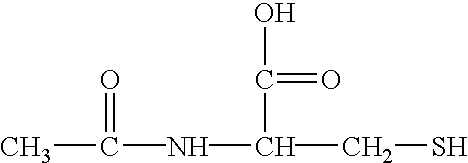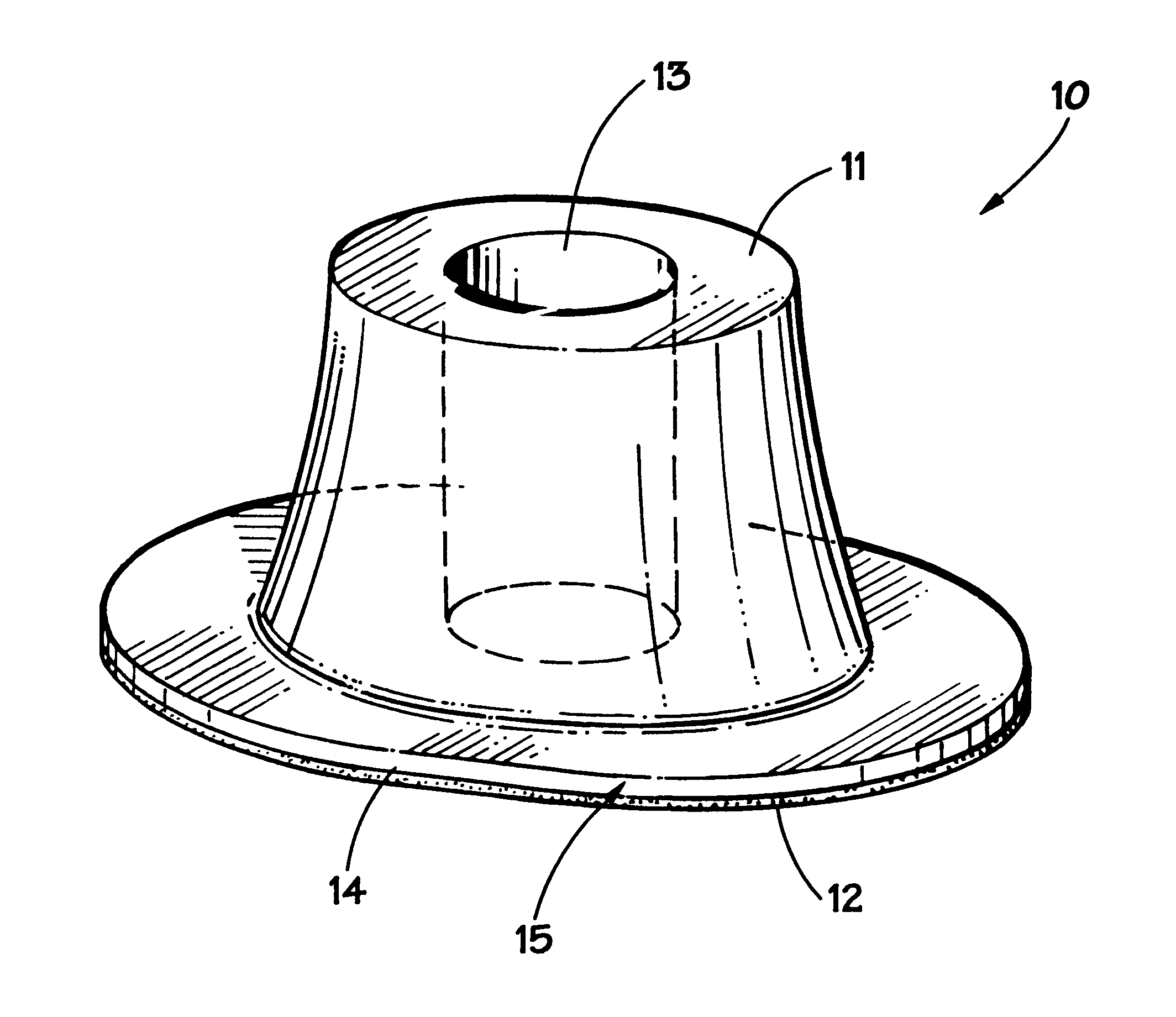Composition and methods for preventing and removing biofilm embedded microorganisms from the surface of medical devices
- Summary
- Abstract
- Description
- Claims
- Application Information
AI Technical Summary
Benefits of technology
Problems solved by technology
Method used
Image
Examples
example 1
Seeding phase: A dynamic flow sterile system that consisted of an infusion bad containing a bacterial suspension of Staphylococcus epidermidis (4.times.10.sup.5 cfu / ml of saline) that infused at equal (about 41 ml / hour) into the lumens of eight ethylene oxide gas sterilized, 7-french, 20 cm polyurethane, single-lumen catheters for 12 hours at room temperature. The catheters were covered plastic sheath to ensure sterility of the surfaces. The bacterial suspension drained from the catheters into beakers.
Growth phase: The lumens of the four catheters were infused with sterile trypticase soy broth ("TSB") at a rate of 10 ml / hour for 24 hours to allow for biofilm formation. The infused broth drained from the catheters into the beakers.
Treatment phase: The lumens of the eight catheters were treated with biofilm penetrating composition solutions as described in Table I. The N-acetylcysteine and rifampin are used at a concentration equivalent to ten times the corresponding minimal bacterici...
example 2
Seeding Phase: A dynamic flow sterile system that consisted of an infusion bag containing a bacterial suspension of Staphylococcus epidermidis (10.sup.5 cfu / ml of saline) that infused at equal rates (about 40 ml / hour) for 12 hours at room temperature into the lumens of four gas-sterilized, 7-french, 20 cm polyurethane, single lumen catheters that were coated as described in Table IV.
All of the biofilm penetrating coatings applied to Catheters 10-12 were prepared as follows with the differences between the addition of either N-acetylcysteine or rifampin to the biofilm penetrating composition coating in the concentrations identified above.
The biofilm penetrating composition coatings were formed by dissolving 75 mg of sodium hydroxide in 15 ml of methanol while stirring until clear, yielding a concentration of 5 mg sodium hydroxide per ml of methanol. The dissolution was more rapidly achieved while stirring on a hot plate at a temperature of about 45.degree. C. Eighty-five (85) ml of b...
example 3
An in vitro model consisting of the modified Robbin's Device ("MRD") was used to study the formation of biofilm and colonization of catheter segments by Staphylococcus epidermidis. The MRD is described in greater detail in Nickel, et. al. "Tobramycin resistance of Pseudomonas aeruginosa cells growing as a biofilm on urinary catheter material," Antimicrobial Agents and Chemotherapy, 27:619-624 (1985) which is hereby incorporated by reference in its entirety.
The MRD is constructed of an acrylic block 42 cm long with a lumen of 2 mm.times.10 mm. The MRD has 25 evenly spaced specimen plugs, each connected to a 1 cm silicone catheter segment whose anterior surface (0.3 cm.sup.2) comes in contact with the flushed infusate coming from a connected tubing and infusion bag.
Six different types of silicone catheter segments were coated as described in Example 3 above with the differences being in the concentrations of the biofilm penetrating agent and / or antimicrobial agent present in the biofi...
PUM
| Property | Measurement | Unit |
|---|---|---|
| Fraction | aaaaa | aaaaa |
| Density | aaaaa | aaaaa |
| Density | aaaaa | aaaaa |
Abstract
Description
Claims
Application Information
 Login to View More
Login to View More - R&D
- Intellectual Property
- Life Sciences
- Materials
- Tech Scout
- Unparalleled Data Quality
- Higher Quality Content
- 60% Fewer Hallucinations
Browse by: Latest US Patents, China's latest patents, Technical Efficacy Thesaurus, Application Domain, Technology Topic, Popular Technical Reports.
© 2025 PatSnap. All rights reserved.Legal|Privacy policy|Modern Slavery Act Transparency Statement|Sitemap|About US| Contact US: help@patsnap.com



